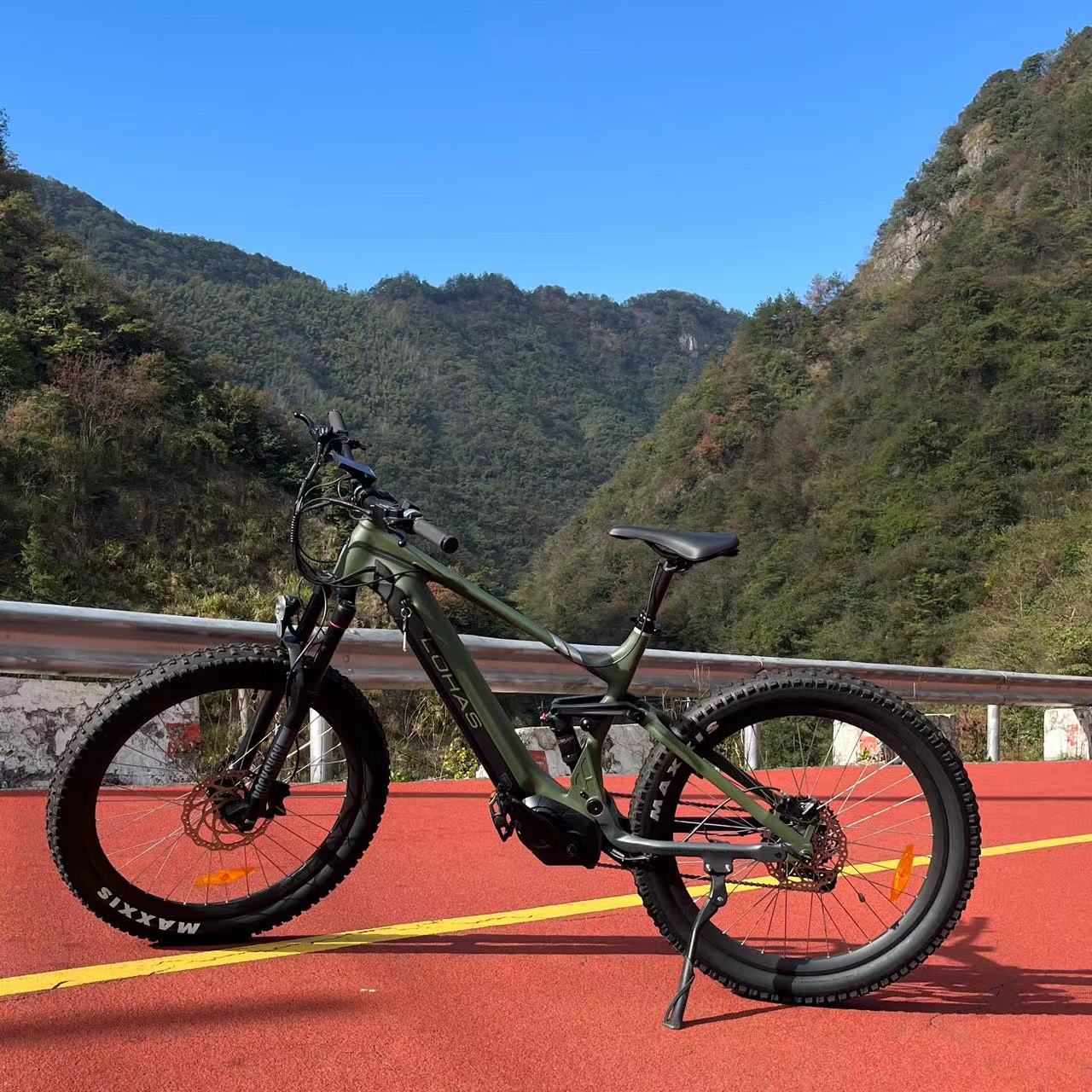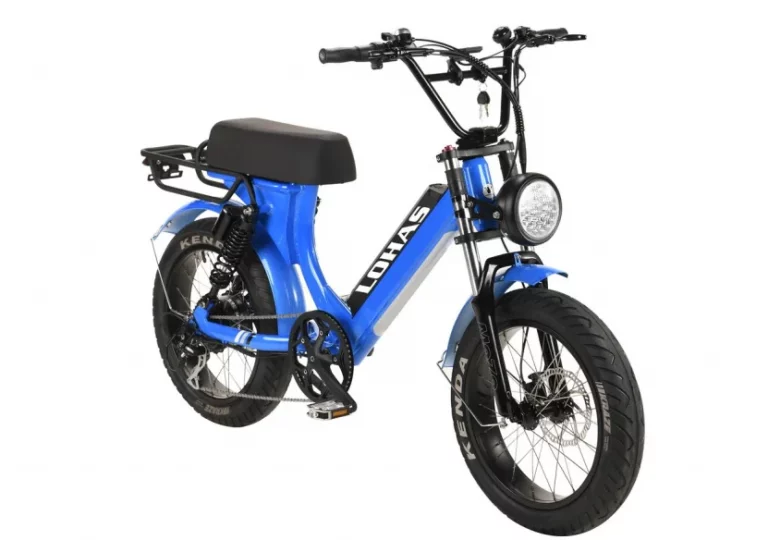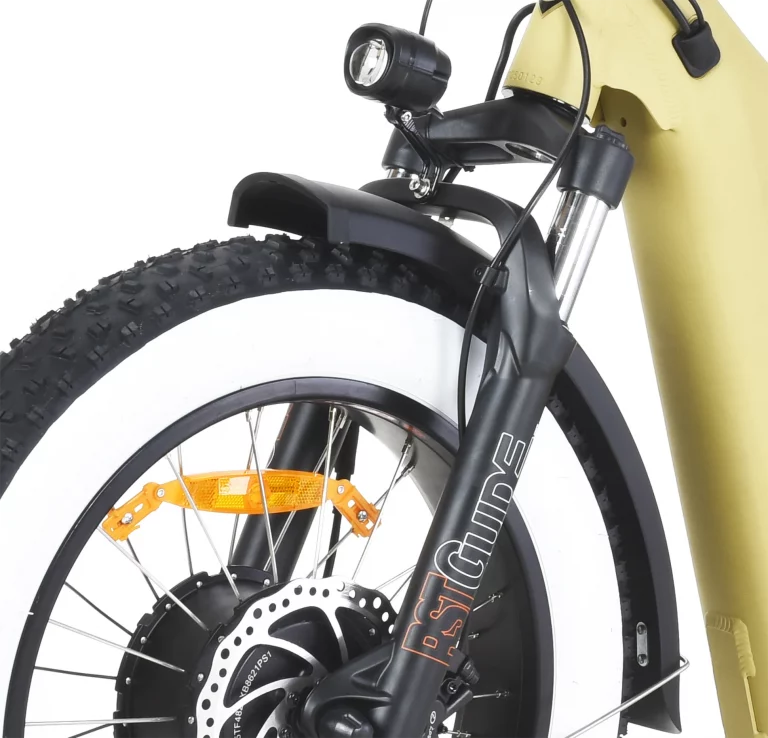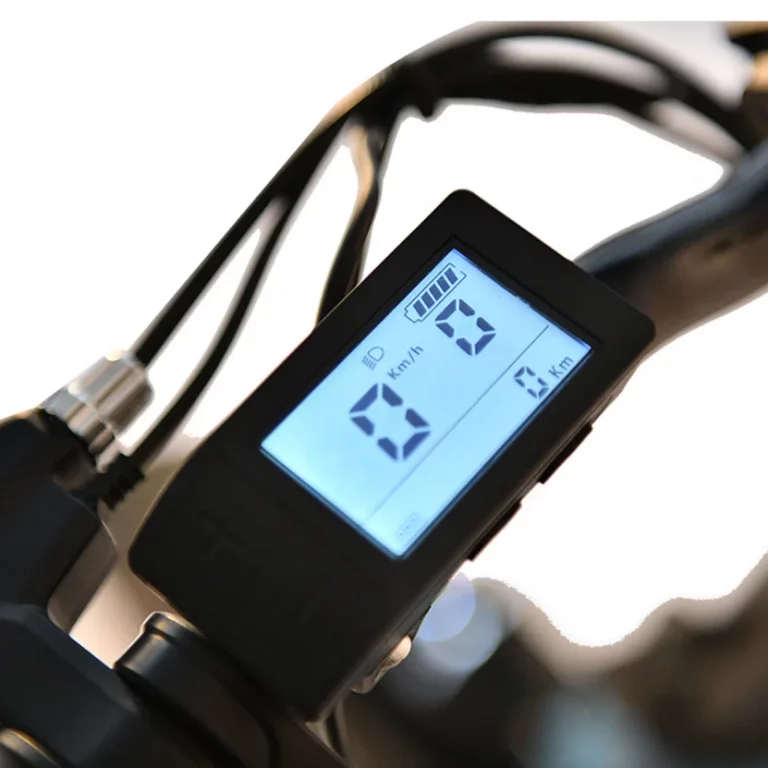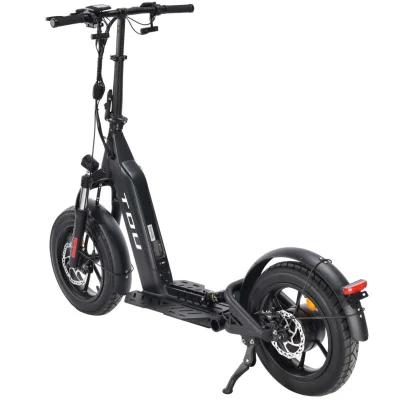An electric bicycle, commonly known as an e-bike, is a modern iteration of the traditional bicycle enhanced by the integration of an electric motor to aid propulsion. While maintaining the conventional framework of a standard bicycle, it incorporates advanced elements such as a battery, motor, and control system. These enhancements facilitate extended travel with reduced physical effort for the rider. Consequently, e-bikes have gained widespread popularity for commuting, recreational purposes, and fitness activities.
How Do Electric Bikes Work?
Electric bicycles operate through a synergy of human pedaling and electric propulsion. The rider engages the pedals as one would on a traditional bicycle, with the added option to activate an electric motor for supplemental power. This assistance is typically managed via a throttle or pedal-assist system. Sensors detect the pedal motion and subsequently activate the motor, offering additional support that simplifies pedaling efforts. The energy required by the motor is stored in a battery, which can be conveniently recharged using a standard electrical outlet.
Yongkang LOHAS Vehicle Co., Ltd., recognized as one of the leading brands in electric bicycle production, is dedicated to extensive research, development, and manufacturing of related products. As a modern integrated enterprise, Yongkang LOHAS Vehicle Co., Ltd specializes in design innovation and distribution excellence for both electric bicycles and scooters, maintaining an unwavering commitment to high-quality standards.
Types of Electric Bikes
There are various types of electric bikes, each designed for different purposes:
- Pedal-Assist E-Bikes (Pedelecs): These provide motor assistance only when the rider is pedaling, offering a more natural riding experience.
- Throttle-Controlled E-Bikes: These allow the rider to activate the motor using a throttle without needing to pedal.
- Speed Pedelecs: A faster version of the pedal-assist type, with assistance up to higher speeds.
- Cargo E-Bikes: Built to carry heavier loads, these bikes are ideal for transporting goods and are often used for deliveries.
Pedaling an E-Bike: The Basics
Assist Modes on Electric Bikes
Electric bikes come equipped with different assist modes that control the level of assistance provided by the motor. These modes can usually be adjusted based on the rider’s preference and the riding conditions. Common modes include:
- Eco Mode: Provides minimal assistance to conserve battery life, ideal for long rides.
- Standard Mode: Offers moderate assistance suitable for various riding conditions.
- High Mode: Delivers maximum assistance, helpful for climbing steep hills or when the rider is fatigued.
Differences Compared to Traditional Bicycles
Pedaling an e-bike differs significantly from riding a traditional bicycle, mainly due to the added motor assistance. On an electric bike, riders can maintain a steady speed with less physical effort, which is particularly useful when tackling inclines or long-distance rides. The presence of a motor also means that the bike is generally heavier than a traditional bicycle, affecting handling and maneuverability. Additionally, e-bikes often feature advanced braking systems to manage the higher speeds achieved through motor assistance.
Factors That Affect Pedaling Difficulty
Battery Life and Charge Level
The ease of pedaling an e-bike is heavily influenced by the battery life and charge level. A fully charged battery ensures optimal motor performance, providing consistent assistance to the rider. As the battery drains, the level of assistance may decrease, making it harder to pedal. Therefore, regular charging and monitoring of the battery’s health are essential for a smoother riding experience.
Terrain and Riding Conditions
Terrain and riding conditions play a significant role in determining the difficulty of pedaling an e-bike. Different settings present unique challenges:
Flat Surfaces vs. Hills
Riding on flat surfaces generally requires less effort, with the motor providing balanced assistance. However, when navigating hills, the motor needs to work harder, and the rider may feel a greater need for higher assist modes. Climbing steep inclines can still be challenging without adequate motor support, especially if the battery is low.
Urban vs. Rural Settings
Urban environments often involve frequent stops and starts, requiring the rider to use the motor regularly to accelerate. In contrast, rural settings might involve longer stretches of uninterrupted riding, where a lower assist mode can be used to conserve battery. Additionally, urban areas may have smoother roads, whereas rural trails could present more varied terrain, affecting the overall pedaling difficulty.
Benefits of Pedaling an Electric Bike
Physical Fitness
Pedaling an electric bike still engages your muscles, providing a good workout albeit with reduced strain compared to traditional bikes. The pedal-assist feature allows for varying intensity levels, making it an excellent option for those looking to gradually build their fitness. Users can control the amount of effort they put into each ride, ensuring they receive a balanced exercise that tones muscles and improves cardiovascular health. The ability to adjust assist levels can also help individuals with physical limitations or those new to cycling to gradually increase their strength and endurance.
Energy Efficiency
E-bikes are profoundly energy-efficient compared to other modes of transportation, particularly motor vehicles. The combination of human power and electric assistance means that riders can travel longer distances on less energy. Even with frequent use, an e-bike’s battery can last several hours on a single charge, depending on the assist mode used. This energy efficiency translates to lower operating costs, as less energy is consumed per mile traveled. Additionally, e-bikes typically require less maintenance and fewer resources compared to fuel-dependent vehicles, supporting a more sustainable mode of transportation.
Environmental Impact
Electric bikes present a greener alternative to conventional motorized forms of transportation. They produce no emissions during operation, contributing to cleaner air and reducing the rider’s carbon footprint. Utilizing an e-bike for commuting or running errands can significantly decrease reliance on fossil fuels, leading to a positive environmental impact. By promoting cycling over driving, e-bikes help to reduce traffic congestion and noise pollution in urban areas. Moreover, their manufacturing process often uses fewer resources compared to larger motor vehicles, making them a more eco-friendly option from production to end-of-life recycling.
Yongkang LOHAS Vehicle Co., Ltd covers an area of more than 18,000 square meters. We have two assemble line, and use advanced manufacturing equipment and techniques to produce high-quality electric scooters and electric bike that meet our strict standards. At the heart of our company is a dedicated R&D team comprising 20 professionals who contribute to e-bike design and innovation. To ensure the highest standards, our Quality Inspection team, consisting of 15 meticulous individuals, thoroughly check e-bike and e-scooter before shipment.
Common Misconceptions About E-Bikes
“E-Bikes Are Just for Lazy Riders”
One common misconception is that e-bikes cater exclusively to lazy individuals who prefer a passive riding experience. In reality, e-bikes provide flexibility to riders of all fitness levels. The pedal-assist feature can be adjusted to offer minimal assistance, allowing users to get a vigorous workout if desired. E-bikes also open up riding to people who might otherwise be unable to cycle due to fitness or mobility limitations. By lowering physical barriers, e-bikes encourage more people to incorporate cycling into their daily lives, promoting general health and well-being.
“You Don’t Need to Pedal at All”
Another myth is that riding an e-bike requires no pedaling. While some models offer throttle-based power that doesn’t necessitate pedaling, the majority still require some level of human input. Pedal-assist bikes depend on rider pedaling to activate the motor, blending human and electric power for an enhanced cycling experience. This combination allows riders to choose how much effort they want to exert, balancing between manual effort and motor assistance. Consequently, users still engage in physical activity while benefiting from the ease and convenience offered by the electric motor.
Tips for an Easier Ride on Your E-Bike
Selecting the Right Assist Mode
Choosing the correct assist mode is crucial for an enjoyable e-bike experience. Assess the terrain and distance of your ride to determine which mode will provide optimal support. For routine commutes on flat terrain, an eco or low-assist mode can help conserve battery while still offering noticeable support. Conversely, if you expect challenging hills or longer rides, a standard or high-assist mode will provide sufficient aid to maintain a comfortable pace. Experimenting with different modes can help you understand how your e-bike performs under various conditions, ensuring you make the most informed choice for each journey.
Regular Maintenance Checks
Routine maintenance is vital to keep your e-bike functioning at its best. Regularly inspect the battery, tire pressure, brakes, and motor system to ensure everything is in good working order. Batteries should be charged frequently to maintain longevity and performance. Checking tire pressure can prevent flats and enhance ride comfort, while functioning brakes are essential for safety. Cleaning the motor and drivetrain periodically can prevent dirt and debris from affecting performance. Scheduling professional service checks can also address any minor issues before they become significant problems, extending the life of your e-bike.
Comparing E-Bikes with Traditional Bicycles
Cost Efficiency
E-bikes represent an investment, but they can be cost-efficient over time. Despite the higher initial purchase price compared to traditional bicycles, the operational costs of an e-bike are relatively low. Electric bikes reduce or eliminate the need for fuel, public transport fares, and the costs associated with car maintenance and parking. Moreover, the longevity of e-bike components, combined with reduced commuting times, can make them a financially sound choice for regular users. Factoring in these savings, an e-bike can quickly offset the initial expenditure through practical, everyday use.
Health Benefits
Both e-bikes and traditional bicycles offer substantial health benefits; however, e-bikes make cycling more accessible and enjoyable for a broader audience. The pedal-assist feature encourages people to ride longer distances and more frequently, which can enhance cardiovascular health, muscle tone, and overall fitness. For those who might find traditional cycling too strenuous, e-bikes provide a more approachable way to stay active, potentially leading to more consistent physical activity. By lowering the entry barrier, electric bikes play a critical role in promoting a healthier lifestyle.
Practical Usability
E-bikes often surpass traditional bicycles in terms of practicality, especially for commuting and carrying loads. Features like cargo capabilities, integrated lights, and advanced braking systems make them suitable for a variety of tasks that might be challenging on a traditional bicycle. Additionally, the motor assistance allows riders to maintain higher speeds with less effort, making them a viable alternative for longer commutes or hilly terrains. This usability extends to people with physical limitations or health concerns, offering a broader range of cycling opportunities to meet different needs.
In conclusion, the notion that e-bikes are difficult to pedal is predominantly a misconception. By considering the factors influencing pedaling ease and harnessing the advanced technology integrated into electric bicycles, riders can experience a versatile and highly efficient mode of transportation. E-bikes offer a compelling alternative to traditional cycling and other forms of transport, providing significant advantages in terms of fitness, efficiency, and environmental sustainability.

